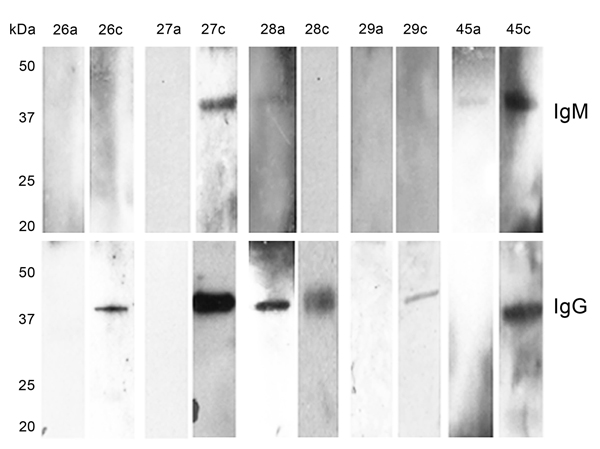Borrelia miyamotoi sensu lato Seroreactivity and Seroprevalence in the Northeastern United States
Peter J. Krause

, Sukanya Narasimhan, Gary P. Wormser, Alan G. Barbour, Alexander E. Platonov, Janna Brancato, Timothy Lepore, Kenneth Dardick, Mark Mamula, Lindsay Rollend, Tanner K. Steeves, Maria Diuk-Wasser, Sahar Usmani-Brown, Phillip Williamson, Denis S. Sarksyan, Erol Fikrig, Durland Fish, and the Tick Borne Diseases Group
Author affiliations: Yale School of Public Health, New Haven, Connecticut, USA (P.J. Krause, J. Brancato, L. Rollend, T.K. Steeves, M. Diuk-Wasser, D. Fish); Yale School of Medicine, New Haven (P.J. Krause, S. Narasimhan, M. Mamula, E. Fikrig); New York Medical College, Valhalla, New York, USA (G.P. Wormser); University of California, Irvine, California, USA (A.G. Barbour); Central Research Institute of Epidemiology, Moscow, Russia (A.E. Platonov); Nantucket Cottage Hospital, Nantucket, Massachusetts, USA (T. Lepore); Mansfield Family Practice, Mansfield, Connecticut, USA (K. Dardick); L2 Diagnostics, LLC, New Haven (S. Usmani-Brown); Creative Testing Solutions, Tempe, Arizona, USA (P. Williamson); State Medical Academy, Izhevsk, Russia (D.S. Sarksyan)
Main Article
Figure 2

Figure 2.
Western blot reactivity to recombinant Borrelia miyamotoi glycerophosphodiester phosphodiesterase in serum samples from 5 Borrelia miyamotoi sensu lato–seropositive patients in the northeastern United States, 1991–2012Numbers at the top of rows are patient numbers and correspond to patients 26–29 and 45 in (Table 1)The letters a and c that follow patient numbers indicate acute- and convalescent-phase serum samples, respectivelyWestern blot results that show no seroreactive IgG and/or IgM band in acute-phase serum samples and a reactive IgG and/or IgM band in convalescent-phase serum samples are consistent with ELISA results showing a 4-fold rise in Bmiyamotoi sensu lato antibody titer from acute-phase (negative) and convalescent-phase (positive) serum samplesThe acute-phase serum of patient 28 was nonreactive for IgG in the ELISA assay (Table 1), but the sample was reactive for IgM and IgG on Western blot.
Main Article
Page created: May 06, 2014
Page updated: May 06, 2014
Page reviewed: May 06, 2014
The conclusions, findings, and opinions expressed by authors contributing to this journal do not necessarily reflect the official position of the U.S. Department of Health and Human Services, the Public Health Service, the Centers for Disease Control and Prevention, or the authors' affiliated institutions. Use of trade names is for identification only and does not imply endorsement by any of the groups named above.
